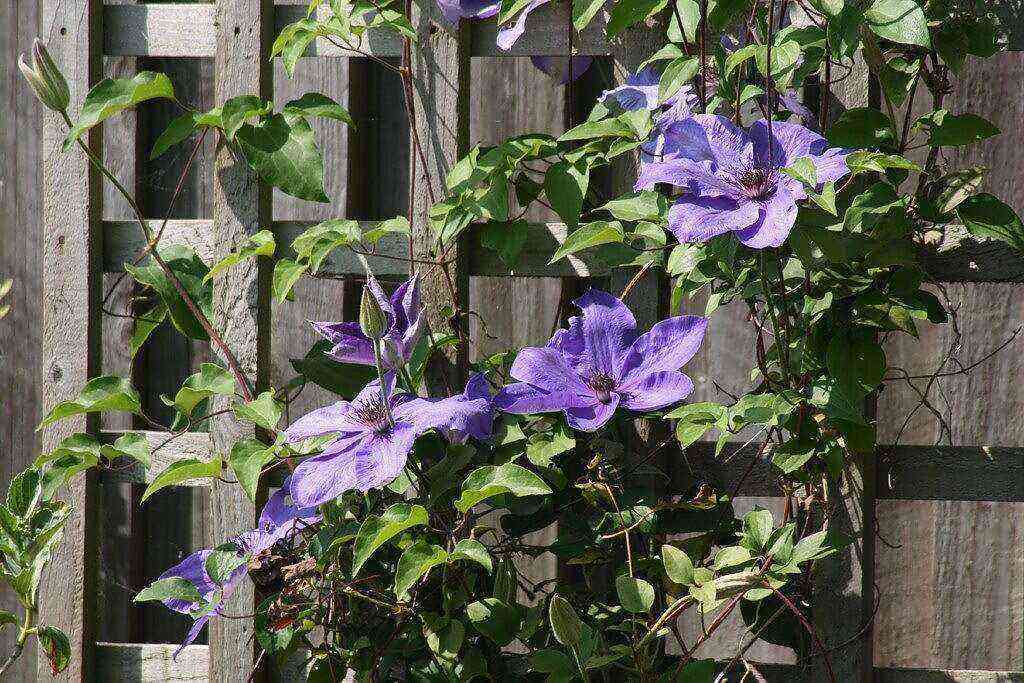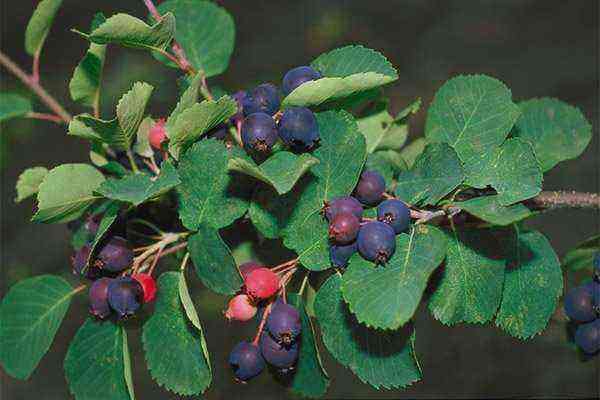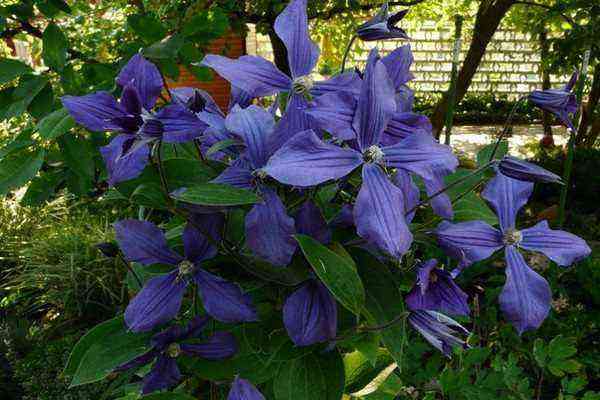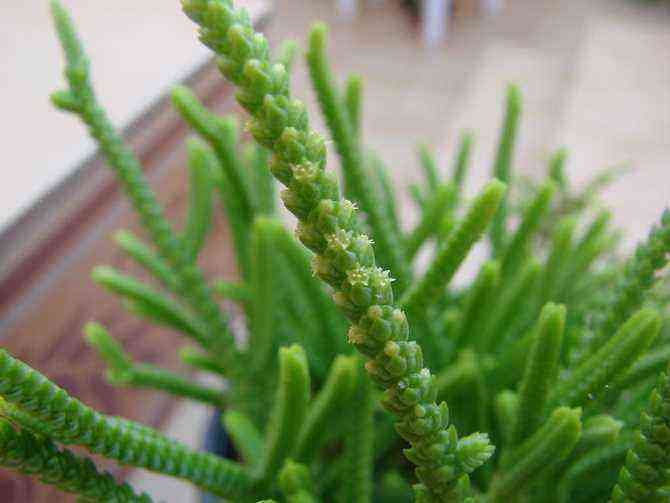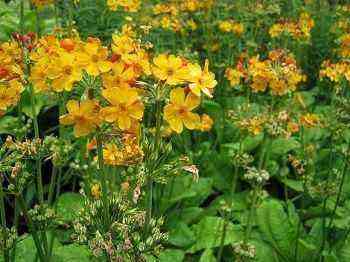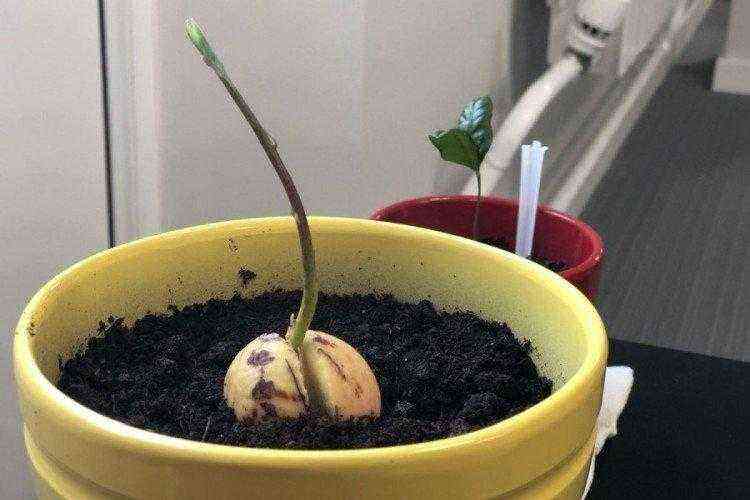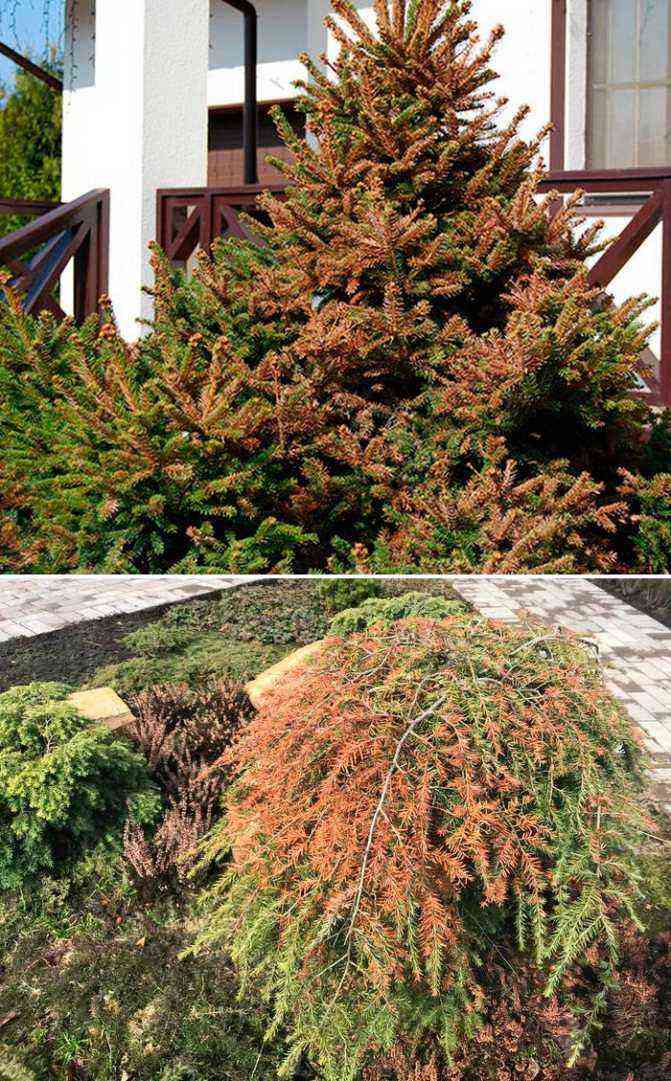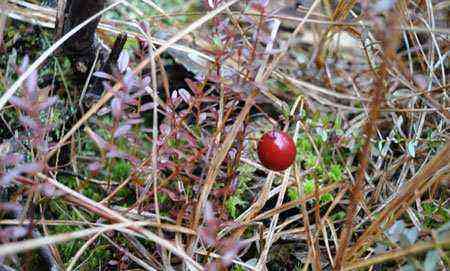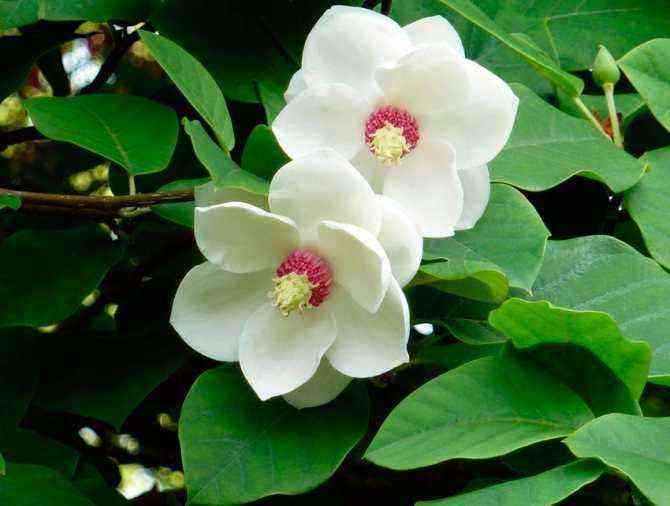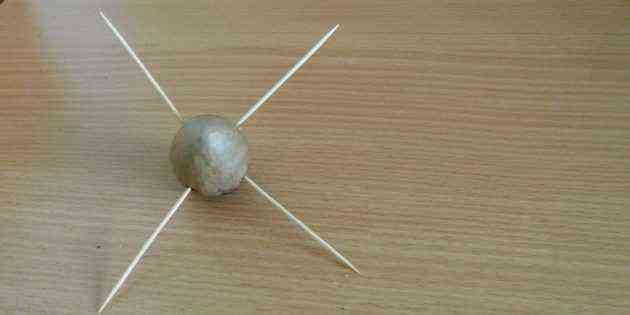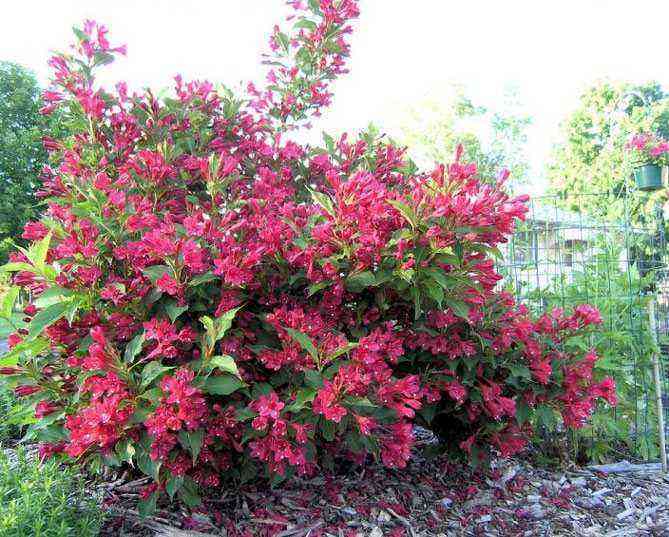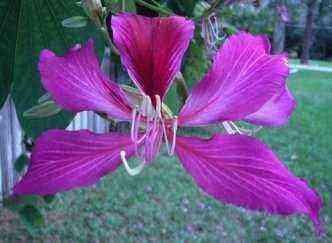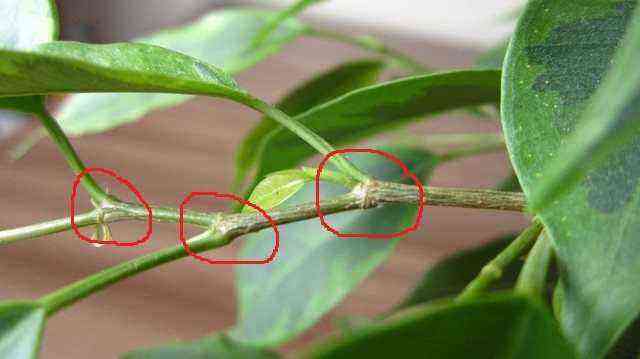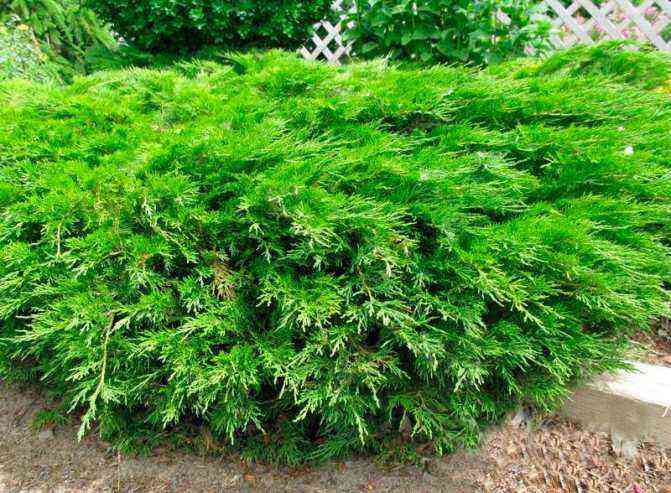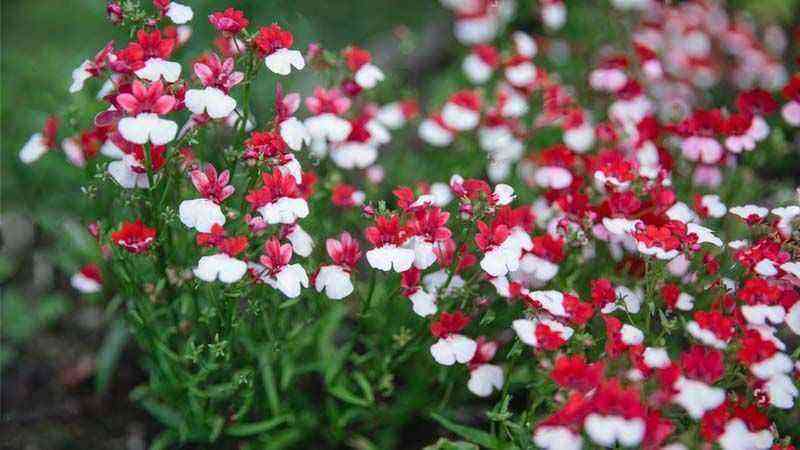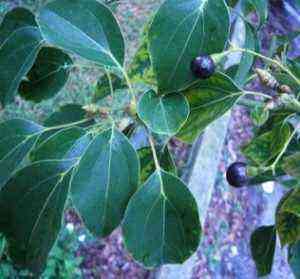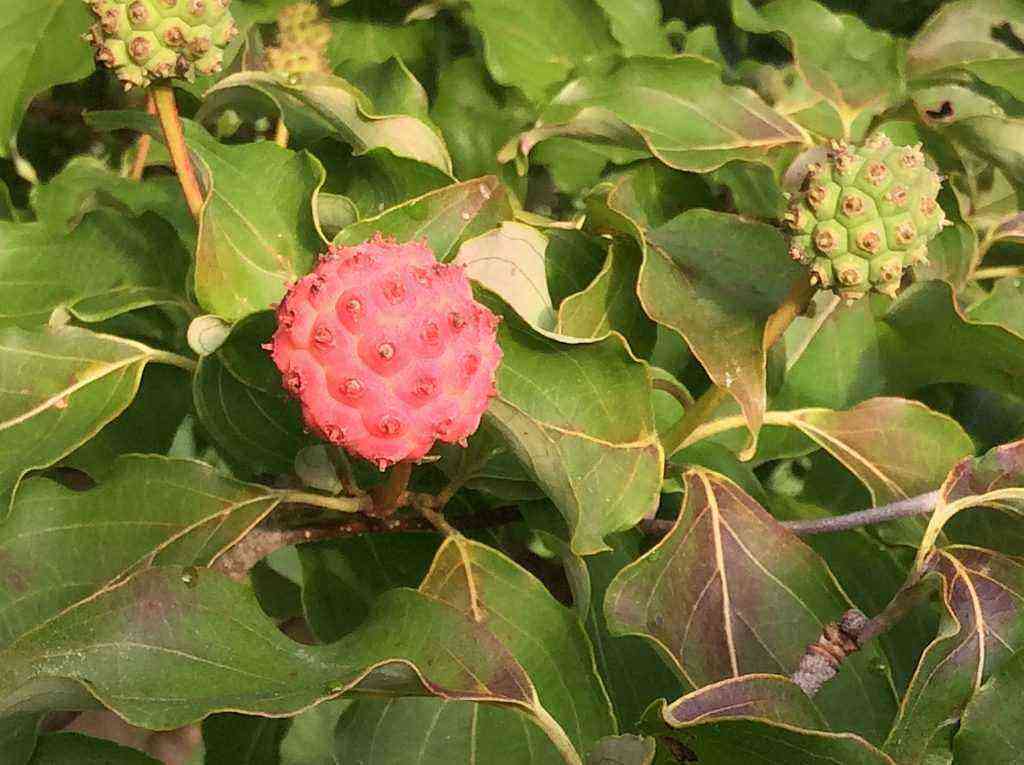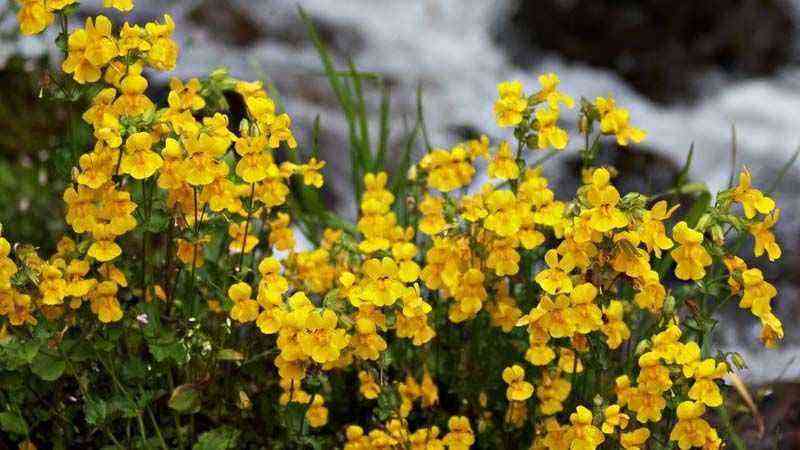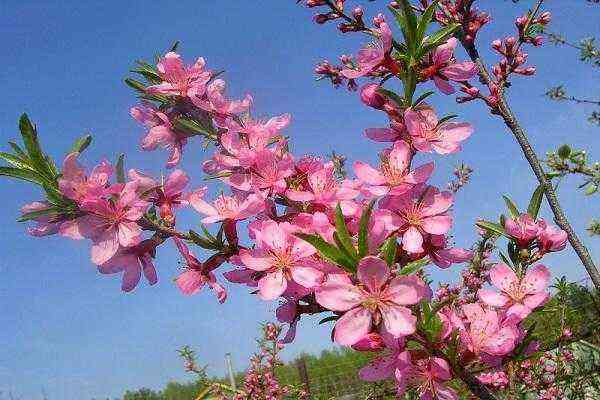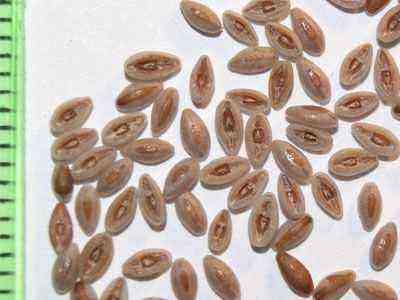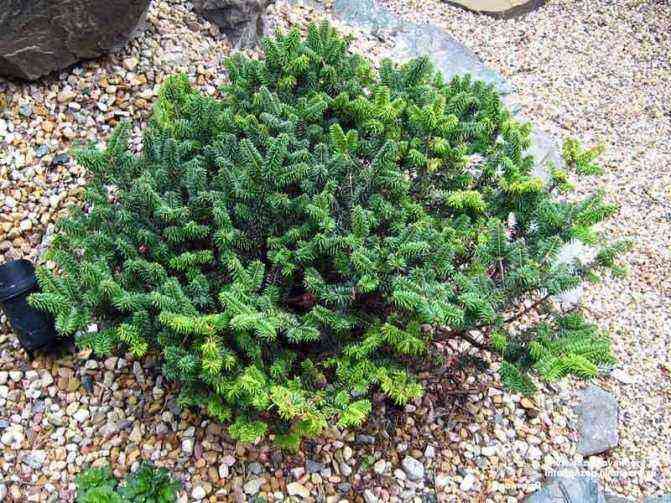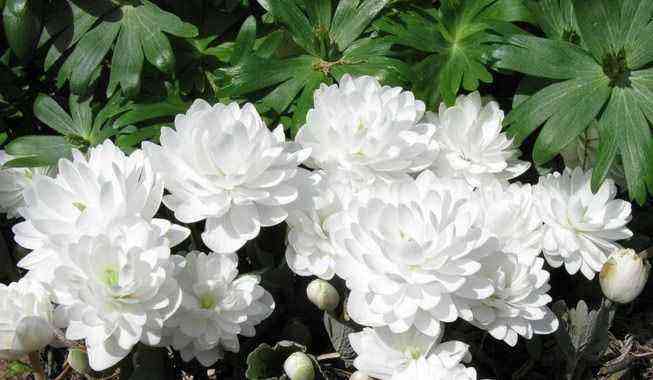Sweet peas: fragrant moths
A native of Mediterranean countries – sweet peas – not so long ago decorated the cozy streets of Sicily, and today, taking with him the flavor and mood of eternal summer, he lives with great pleasure in the vastness of our Ukrainian gardens. Surely there will be a vacant spot on your garden plot, where a silk painted screen will be woven in just a couple of months. Sweet pea is an annual liana from 1 to 3 m in height, deftly climbing a support with the help of its tenacious tendrils with which each leaf is equipped. In the axils of each of them sits a small inflorescence in the form of a tassel of 3–7 flowers of a simple graceful shape, similar to a moth, whose wings are painted in all colors of the rainbow. The total number of varieties to date has exceeded one thousand. Ironically, there is only one color missing from this palette – yellow. Just as the blue rose is the most desired achievement of any breeder, so the yellow sweet peas are still an unattainable dream. But, in addition to a bright palette of colors, peas can attract the attention of a gardener with a pleasant rich honey aroma. People with the most sensitive receptors note that each variety has its own distinctive scent notes.
Top 5 brightest varieties
- Selektsvet has a unique cherry-chestnut color of flowers, collected in inflorescences of 5-7 pieces. Tall variety, reaching 2.5–3 m in height.
- Milky Way opens in cream flowers with a double sail. The inflorescence consists of 5-6 flowers, and the lianas reach a height of 1.5 m.
- Ramona is a medium-sized variety up to 130 cm in height with bright carmine flowers adorned with a white tongue. Flowers are collected in 5-6 pieces per inflorescence about 30 cm.
- King Lavender blooms with pale lilac large flowers in inflorescences of 3-4 pieces. The variety reaches a height of 1.5 m.
- Galina is a bushy sweet pea with a rich blue-violet color of large flowers. The stems grow up to 40-60 cm.
How to decorate your garden with sweet peas?
A pleasant feature of sweet peas is a long continuous flowering – from the end of June until the first frost. Therefore, it is put on display, sowing along the walls and the fence, it braids verandas, gazebos, arches, pergolas and frames. A green screen, as part of the overall design of the garden, will fulfill both a functional task, dividing the garden into zones, and decorative, aromatizing and decorating the entire space around it. There are also varieties that grow in the form of a shrub, the height of which ranges from 30 to 50 cm. Such sweet peas are diluted with an assortment of perennial mixborders or annual flower beds, and also planted in deep containers, decorate terraces and balconies.
How to create a comfortable environment for sweet peas
A place. Even the presence of a light shade delays the flowering of peas to a later date and makes it not so abundant and bright. So the place should be well lit by the sun all day. The soil. Peas love deeply cultivated, nutritious soil with a neutral reaction of the environment. It should not be returned to its original place for the next 3-4 years. In each new season, it is better to plant the plants in soil where no legumes have yet grown. Fertilizer. Sweet peas, like all plants of the legume family, have the ability to absorb nitrogen from the air and nourish the roots. Therefore, you can save on nitrogen fertilizers with this flower. Fertilizers with full nutrient soil should be applied literally 2-3 times per season. Any complex fertilizers will do. Watering.The best climate for peas will be cool and rainy summers. During prolonged periods with high temperatures and in the absence of precipitation, the buds fall off, and the remaining flowers become dull and dull. It is very easy to avoid this with regular and abundant watering. But you should not be zealous either, because with an excess of humidity, the picture will be the same as with a drought, and sometimes this can even cause the death of the plant.
How to grow sweet peas from seeds
There are two ways to grow sweet peas – sowing seeds in the ground or through seedlings. Both options have their advantages, but there are some subtleties to consider. Pea seeds have a very dense shell that can stretch the germination period from a week to a month. Therefore, the seeds must be soaked until they swell or left for a couple of days in damp gauze. The exceptions are varieties with white and cream flowers. It is noticed that after soaking, the percentage of their germination drops sharply. Therefore, they are sown dry.
Varieties with white and cream flowers are sown dry.
Sowing in open ground can be started as soon as stable warm weather is established, without the threat of severe night frosts. As a rule, this period falls on the beginning of May. Seeds are sown in a row every 15 cm or in holes of 2-3 seeds with an interval of 30 cm. The sprouted sprouts are not afraid of frosts down to –5 ° С. Since there are mainly imported varieties on sale with a long growing season (from 50 to 80 days), sweet peas will delight us with their flowering no earlier than late July – early August. Seedling plants bloom by mid-June. The seeds are soaked in the last days of March and left under gauze in a warm place for several days. Every day, from the total mass of seeds, the hatched ones are selected and taken for sowing, and the rest are washed and left to peck again.
Seedling plants bloom by mid-June.
Seeds that have not swollen or have not shown a root should simply be thrown away and not wasted time on empty expectations. Since picking in the case of sweet peas is categorically excluded. Each seed is planted in its own separate pot to a depth of 3-5 cm. An excellent option would be disposable cups with a volume of 200 ml or peat pots of the same volume. You can buy special seedling soil from the store or make it yourself by mixing peat, compost and sand in a 2: 2: 1 ratio. After the appearance of the first two true leaves, it is worth pinching the growth point, thereby causing tillering. The same is done with the lateral shoots that have appeared. They begin planting in open ground in early May, showing maximum accuracy with the root system and an earthen clod. Peat pots are simply placed in the holes, and disposable cups are cut from several sides, and, without disturbing the roots, are moved into the soil, carefully covering it with earth from above. Freshly planted plants are well watered and shaded for a couple of days.
Sweet peas: planting and care in the open field
Sweet peas are perfect for creating a bright, stunning flower picture – any inconspicuous place will turn into a cozy place if you decorate it with the epaulettes of this plant. In addition, peas bloom for a long time and are not afraid of low temperatures, and if you learn how to grow them, you will get gorgeous curly flowers for your home or garden.
Step-by-step process of sowing sweet peas in open ground
First, prepare the seeds. Soak them in hot water for a few hours, then let them germinate in a warm place by wrapping the seeds in a damp cloth. After they hatch, plant the prepared seeds directly into the open ground. If you have chosen light-colored sweet pea varieties, do not soak them, as the seeds may die.
You need to sow seeds in late March and early June. 2-3 peas are thrown into the prepared holes, after filling the soil with water. But in this case, the flowering period will come in 50-80 days, which is approximately in August.
How to sow sweet peas in a container?
If you want to ensure optimal growth for your plant, protect it from frost and plant it in open ground only when the stems are strong, use the following method. Sow germinated seeds into a prepared vessel to a depth of 1-2 cm. Make sure that the soil is constantly moist. For sowing, you can prepare a special mixture of 0.5 parts of good black soil, one quarter of peat and one quarter of coarse sand.
When the plants reach a height of 10-15 cm, pinch off their tops. This will give strength to the growth of the side shoots. 40 days after sowing, when there will be no frosts outside, start hardening the plants by taking them outside at night and 45 days after sowing, you can safely plant sweet peas in open ground.
Prepare small seedling holes 15-20 cm apart. Several plants can be planted in each hole. Divide the root system carefully to avoid breaking the plant. You will see the first flowers in a month and a half.
How to grow sweet peas in a greenhouse?
For the plant to germinate in the greenhouse, the seeds must be sown directly into the ground at a distance of 20 cm from each other. If you want to transplant flowers into open ground after germination, they must be gradually hardened: first, open the greenhouse for a certain time so that fresh air circulates there, then leave the greenhouse open overnight. This method is suitable only if, in addition to peas, there is nothing else in the greenhouse or such manipulations will not harm other crops.
Secrets of growing sweet peas
The peas should be watered frequently and abundantly. This plant loves water very much, and may simply die from drought. To achieve the desired result, feed the plant 2 times a month.
Be sure to choose a planting site with good lighting. You will have a better chance of getting a beautiful bouquet of flowers rather than green branches.
When the peas have grown, start tying them up and giving direction to the branches. This will improve the process of their growth and distribute the plant evenly over the surface.
During the flowering of sweet peas, make sure that the faded flowers do not remain on the stem. If you remove them in time, then the flowering period of the peas will significantly last.
Sweet peas should not be sown in the same place twice. If you do not have the opportunity to change the place, then replace the topsoil with fresh one.
It is imperative that before planting or sowing peas, the soil should be well drained and fertilized with compost. This will create favorable conditions for the development and growth of plants.
Each person is special and everyone’s experience is unique. Tell us about yours. Earn recognition and gratitude from our readers.
How to grow sweet peas from seeds: planting time, care, photo
Sweet peas are perfect for decorating a personal plot. Its amazing bright flowers always attract attention, delight. Inhaling the pleasant aroma they exude, you forget about everything. As you guessed, dear summer residents and farmers, the hero of our today’s story is sweet pea . Growing from seeds, when to plant, photos and descriptions are all in the article.
Why plant sweet peas?
1. High decorativeness. For its extraordinary beauty, this plant is loved most of all. Although the development of new varieties was quite slow, today there are a whole lot of them. They differ in everything: the color and shape of the flowers, the structure of the bush (low and curly). Each grower can choose according to his taste. By planting different varieties together, you will get a real rainbow on your site, as shown in the photo.
2. Duration of flowering. This is the undisputed advantage of sweet peas. With the right cultivation approach, you can get it to bloom for most of the season. This beautiful representative of the flora tolerates light frosts well, so it can be planted early.
3. Bright aroma. A bonus to the colorful picture created by sweet peas on the site is an indescribable aroma!
Growing sweet pea seedlings – yes or no?
Some growers unequivocally argue that growing sweet peas through seedlings is an unjustified expenditure of energy. The plant does not withstand transplantation due to the structural features of the root system and the fragility of the stems.
On the other hand, seedless cultivation of climbing varieties of sweet peas leads to late flowering – in the second half of summer. Of course, everyone wants to observe such beauty from the very beginning of summer, therefore, despite the problems with transplantation, many growers still take up growing seedlings. If you want to collect seeds, then you most likely cannot do without seedlings.
Seedless peas may not be able to harvest seeds.
Preparing the seeds for planting
Regardless of whether you are planting seeds in seedling cups or directly into the open ground, they need to be well prepared. Florists advise to soak them and wait until they hatch. This is especially important in the case of using purchased seeds, the quality of which can be questioned. During soaking, it is easy to control the process and see which seeds are worth pinning their hopes on and which ones will not germinate at all.
First, the seeds must be poured with water for a day to swell. Then the water should be drained, and the seeds should be wrapped in a dampened cloth, wrapped in plastic and placed in a warm place. Those that hatch can be sown, the rest can be discarded or try to germinate again.
Growing sweet pea seedlings
If you nevertheless decide to exert yourself to grow seedlings and get early flowering of sweet peas, then the following tips will definitely come in handy for you:
And now about when to plant a crop. It is ideal to sow allspice seeds for seedlings in early April. You should not rush to land in winter. This will produce thin and weak seedlings.
So, if you follow all the recommendations when growing allspice seedlings, then in June it will bloom in lush color. We wish you it was like in the photo below.
How and when to plant seeds outdoors
Planting sweet pea seeds outdoors is a more common cultivation method. If the selected variety is perennial, this will have to be done only once every few years. When asked when to plant, we answer: in May. And when asked how to plant, we give recommendations:
• Dig holes 3 cm deep at a distance of 8-10 cm from each other.
• Place 3 seeds in each hole.
• The land must be watered.
• When the seedlings get a little stronger, the rows can be thinned a little.
Allspice care, photo
Now is the time to talk about caring for allspice outdoors. Check out the basic tips for growers.
Watering. As already noted, sweet peas are picky about watering. It quickly absorbs water from the ground. We must warn you – if you rarely appear on your site, then you will not grow a magnificently flowering plant. And one more nuance: the bushes from which you plan to collect seeds need to be watered much less often.
Top dressing. By and large, sweet peas can do without additional nutrition. But by adding top dressing to the soil, you will achieve a more lush and long-lasting flowering. If you choose to fertilize, choose a chlorine-free fertilizer and don’t get carried away with nitrogenous fertilizers.
Tillage and garter. The soil should be loosened and weeded regularly. The support must be from the very beginning. Watch how the pea lashes are distributed, and if necessary, change their direction.
Pruning. It is not worth shortening the lashes, but it is necessary to cut off all faded flowers and set beans. This will extend the flowering period of the plant.
Now you know almost everything about sweet peas: growing from seed, when to plant. The photos provided in the article clearly show you what healthy plants look like. We hope that you will be able to grow something like this on your site thanks to our advice.
Watch the video: Features of growing sweet peas
How to grow sweet peas – a favorite flower of English gardeners
If you once grew sweet peas in your beloved dacha, breathed in its delicate vanilla aroma, admired the flowers that look like miniature copies of orchids, then you must have given your heart to this lovely old flower forever.
And you can be understood! The charm of sweet peas knows no bounds: neither time nor garden fashion dominates over it. He conquers summer residents with charming cuteness and exquisite “manners”. At the same time, modern varieties of an ancient plant amaze the imagination of even sophisticated florists.
Let’s take a short historical excursion into the past of sweet peas. And then we will consider its current position in the ranking of garden flowers.
Historical dossier
The British were and remain true admirers of exotic beauty and exquisite aroma of sweet peas. Southern Italy (Sicily) is considered to be his homeland. It was from there that he first came to India, and then to Europe. The British liked it so much that in 1900 they created a whole society of lovers of this southern fragrant beauty. Today, sweet peas are the most popular flowering plant in foggy Albion, a kind of emblem of English garden design.
Moreover, abroad, under the sweet pea (rank), 2 types are understood: the broad-leaved rank (Lathyrus latifolius) and the fragrant rank (L. odoratus), calling all Sweet pea .
We will comprehensively consider sweet peas, which were brought to Russia in the 30s of the last century. It is quite possible that varieties (hybrids) of two more Mediterranean species are grown on household plots and dachas in Russia under the general name sweet pea : part of the large-flowered (Lathyrus grandiflorus) and the already mentioned part of the broad-leaved (L. latifolius).
Botanical dossier
Fragrant peas, or fragrant rank (L. odoratus) is an annual herb with a height of 15 cm to 2.5 m, with ribbed stems. Leaves are compound, feathery, bright green, ending in a tendril with which the plant clings to the support.
The flowers are moth, fragrant, graceful in shape, 3.5 cm in diameter, of a wide variety of colors (from light blue to dark blue and purple, not only yellow), collected in brushes of 3-12 pcs.
Clusters emerge from the axils of the leaves of the main shoot: starting from the 9th node – in the early varieties, in the later ones – from 16-18. Blooms from late June (or early July) to September. The average flowering time is 45-60 days. Fruits are pubescent beans 5-7 cm long, with 3-6 seeds. Warning! Sweet pea seeds are poisonous!
Sweet pea varieties
Currently, the world assortment includes more than 1000 varieties with flowers of white, pink, red, blue, blue, orange color. Both domestic and foreign breeders often combine them into groups. Now in the world market, two-tone varieties (burgundy + white, blue + purple, pink + burgundy) have become confident sales leaders.
Breeders worked hard not only on the variety of flower colors. There were varieties with a fringed edge of petals, terry cultivars.
By their appearance, the varieties of sweet peas are subdivided into undersized, or dwarf (15-80 cm high), which do not require support. Examples:
Tall (1-2.5 m high), which need support and direction of the shoots. Examples:
- ‘Multiflora Gigantea’ (early flowering, corrugated petals, mixture of colors);
- group ‘Spenser’ (peduncles up to 15 cm long, mixture of colors);
- ‘Galaxy Group’ (in brushes of 8 flowers, a mixture of colors).
Sort mixture from the ‘ Spenser ‘ group . Mixture from the ‘ Galaxy ‘ group .
Practical advice. I advise summer residents of central Russia to pay attention to the domestic varieties of the VNIISSOK selection (Moscow), which are often sold by the Gavrish company.
What sweet peas love
What sweet peas don’t like
Seed Reproduction
Propagated by seeds (1 g contains 8-15 pcs.). Sowing seedlings in February-March, in separate containers.
In the south, you can immediately sow in open ground: dry, without soaking – in March-April, with soaking – in May.
Summer residents in other regions will have to grow seedlings. Before sowing, the seeds are soaked in hot water, left in it for 10 hours, then kept in sawdust for 3-4 days at a temperature of +18. + 20 ° C for germination. The seeds that have hatched are sown in peat pots. The soil substrate consists of a mixture of peat, humus, sod land and sand (2: 2: 2: 1), the embedding depth is 2 cm.


In May, the seedlings of sweet peas are carefully transferred into the open ground.
Practical tip: do not store sweet pea seeds for a long time: their germination lasts from 2 to 5 years.
You will find an extensive selection of sweet pea seeds in our planting material catalog, which includes offers from large garden online stores. View a selection of sweet peas:
Accommodation in the country
The rich amplitude of the height, all kinds of flowers (except for yellow) and a wonderful delicate aroma are the indisputable advantages of sweet pea. They make it possible to use this plant in a wide variety of garden design elements. Low-growing or dwarf varieties can be planted as a flower border, in the foreground of landscape flower beds, and even in rockeries. They look luxurious in various flowerpots.
Dwarf sweet pea in a container. Photo from davesgarden.com. Among the stones. Photo from the site amazon.co.uk
Tall varieties are ideal for vertical gardening, creating accents in flower beds on various types of supports.
Practical tip: To fully enjoy the delicate aroma of sweet peas, it must be planted at face level. It is luxurious both as an ampelous and as a climbing container plant.
Sweet peas can be grown in containers and balcony boxes.
In addition, it can be used to decorate a balcony or loggia, shade a gazebo, and create a hedge.
Sweet peas can be cut to create beautiful, fragrant bouquets, including wedding bouquets (based on pastel varieties).
If you update the cut of the stems every day and change the water in the vase, then the bouquet will last more than a week!
And in conclusion – the traditional questions from the author. Do sweet peas grow in your country house? Which varieties do you like the most?
Sweet peas: planting and care
It is not difficult to turn a garden plot into a real piece of paradise with the help of delicate sweet pea inflorescences. This climbing flowering plant will decorate any territory, braiding various supports with a weightless carpet and spreading a pleasant delicate aroma in the air. As the name implies, this plant has inflorescences with a pleasant, delicate scent. In addition, thanks to the wide color palette, it is easy to choose the shade of petals to your liking.
Benefits of growing sweet peas
Sweet peas weaving on various supports with delicate flowers have a number of indisputable advantages, thanks to which it has gained wide popularity among modern summer residents and has become widespread in the yards of private houses and in garden plots. Sweet peas are quite unpretentious and are also suitable for vertical gardening of a balcony or loggia – with sufficient watering, it is easy to grow it in boxes with earth.
Among the benefits of sweet peas are the following:
- high decorative properties – with the help of this climbing plant, it is easy to create a flowering screen on the site, to decorate a nondescript wall of a house or a barn, a garden pergola, a gazebo or a fence;
- the unpretentiousness of this plant – it can easily tolerate autumn and spring frosts (up to -5 ° C);
- the ability to form a comfortable diffused shadow with its weaving on nearby supports;
- undersized varieties of sweet peas can be planted in flower beds without any support;
- higher growth rate compared to slowly growing perennial climbing vines;
- long flowering period compared to many other climbing annuals (at least three months);
- sweet peas can be grown not only in the open field, it grows well on balconies – for this, the southeastern side of buildings is best suited;
- this plant retains freshness in the cut form for a fairly long time, bouquets of delicate sweet pea flowers are simply amazing.
Conditions for the growth of sweet peas
This crop can be grown in various climatic zones. Sweet peas feel great in open and calm places (sunny or slightly shaded), in moist and drained breathable soil. This plant does not well tolerate growing on heavy clay soils, constant waterlogging or close occurrence of groundwater, due to significant temperature changes, it can shed petals or die.
Before planting sweet peas, you must first prepare the soil, creating favorable conditions for the normal development of the root system. To do this, add compost for digging to a depth of 15-30 cm, as well as phosphorus and potash fertilizers at normal rates. It should be noted that nitrogen fertilizers and fresh manure are not recommended for this crop. For the growth of sweet peas, a fairly fertile soil with neutral acidity is optimal. In case of increased acidity of the soil, before planting this plant, it is recommended to apply liming in advance by adding slaked lime.
Useful Tips for Growing Sweet Peas
Some gardeners argue that the cultivation of sweet peas is not so easy to carry out – they say, the plant is quite capricious. In fact, figuring out how to grow sweet peas is not too difficult.
To create optimal conditions for the growth of this plant, several features should be taken into account:
- growing sweet peas using seedlings is a more laborious process compared to planting seeds in open ground. In addition, it should be borne in mind that the seedlings are less frost-resistant and more capricious. The branched root system of this plant, which goes deep enough into the soil, does not always tolerate transplanting well, moreover, its thin long stems break easily. Thus, the seedlings of sweet peas must be transplanted together with an earthen pot;
- this plant has seeds with a very dense shell, as a result of which their germination is often difficult and occurs unevenly in time. Gardeners use some tricks to speed up this process (pre-soaking, notching, or wiping with sandpaper);
- planted plants stretch quickly and can break, therefore it is recommended to install weaving supports (optimally – nets) as early as possible and tie plants to them as needed;
- sweet peas are characterized by the development of a root system deepening into the soil, actively absorbing moisture. As a result, for the normal development of plants, it will be necessary to organize regular abundant watering.
When to plant sweet peas
In order to choose the conditions suitable for planting a given plant, first find out how well this particular variety tolerates the cold, how to plant sweet peas, what conditions are optimal for growing it. Do not delay the moment of planting, since the growing season for this plant is quite long. It will take about two to three months from the moment the seeds germinate to the beginning of flowering of the sweet pea. The sooner this happens, the sooner the plant will delight you with its flowering.
The timing of planting and caring for sweet peas must be correlated with obvious climatic conditions. In an area with a mild subtropical climate, it is allowed to plant this plant in the ground in November, with a temperate one – in early spring (this should be done only if the soil does not freeze). With this cultivation of sweet peas from seeds, the flowering of the plant should be expected by mid-spring.
In harsh winters, planting sweet peas can also be undertaken in February, but not directly in the open ground, but indoors. Thus, you can prepare the seedlings in advance for the beginning of the gardening season – for planting after the snow melts in a permanent place of growth. In temperate climates, it is recommended to soak seeds in April-early May. At the same time, depending on the current weather conditions, you can plant sweet peas in open ground from early April to early summer.
Preparing Sweet Pea Seeds
To speed up the germination of the seeds of this plant, experienced gardeners use some tricks. Some craftsmen lightly rub the seeds between layers of sandpaper, or gently slightly cut their surface using nail scissors or a small knife. To create optimal conditions, brown-brown or grayish-brown sweet pea seeds are soaked for several hours. It should be borne in mind that light cream seeds must be planted dry, since they often die when soaked.
For germination, place different varieties of seeds in separate containers and cover with warm or hot water (up to 60 ° C). After a while (within a day), you should drain the water and cover the seeds with a damp cloth, periodically adding a little water. You can also place them in damp sand or sawdust. At a temperature of 18-23 ° C, seedlings appear in about 6-10 days. After germination, the seeds should be sown immediately.
Planting sweet peas
As mentioned above, this plant can be grown in two ways:
- from seeds planted directly into open ground;
- from seedlings.
Each of these methods of growing this crop has its own advantages and adherents. It should be borne in mind that in temperate climates, when planting seeds directly into open ground, the flowering of sweet peas will begin no earlier than the end of July. After the snow melts and when the soil warms up enough, sweet pea seeds are sown in open ground in several pieces (2-3 seeds). To do this, you need to make holes 2-3 cm deep, located at a short distance (10-20 cm).
To grow sweet pea seedlings, you should prepare a soil mixture from sod land with the addition of humus, peat and sand. As pots for seedlings, you can use sufficiently deep narrow containers (for example, disposable plastic cups 200 ml). Seeds must be planted in holes about 2 cm deep and watered. The emerged seedlings should be kept in a cool and bright place at a temperature of about 15 ° C, not forgetting about abundant watering, for two weeks – such conditions are optimal for the development of the root system of the plant and the formation of nodules that fix nitrogen from the soil. If weather conditions permit, it is convenient to place the seedlings on the glassed-in balcony. In addition, it can be placed on a windowsill in a cool room (while at least at night, you will need to provide an influx of cold air). To stimulate plant growth, it is recommended to feed the seedlings sequentially a couple of times. After a few weeks, the roots of sweet peas will be tightly braided in cups with an earthen lump. After the formation of the first two leaves, pinch the growth point (remove the top), then do the same with the lateral shoots and apply top dressing. Thus, the peas will begin to bush, building up the root mass.
For planting in a permanent place of growth in open ground, it is necessary to carefully pull out the earthen lump with seedlings from the pot, so as not to destroy the root system of the seedling. It is convenient to do this by first cutting and removing the plastic cup.
Sweet pea care
During the first two to three days in the open field, it is advisable to shade the seedlings. As a rule, at first the planted plants freeze for several days, and then grow. Within a week, sweet peas can grow new ones, already much more powerful in comparison with the previously developed lateral shoots.
After planting in open ground, this plant needs the usual care in the form of periodic weeding, loosening and not very frequent, but abundant watering. In addition, you will need to provide support for developing climbing plants – for these purposes, a net or a stretched twine is suitable. As the shoots of sweet peas grow, they must be oriented in the right direction, and in this position they must be tied up. To stimulate the development of adventitious processes of the root system, it will be necessary to huddle the plant and apply top dressing. For this, the nutrient substrate must be added to the root system of young shoots.
There is also an important nuance that should be taken into account when growing sweet peas. To prolong the flowering of plants, it is necessary to cut off the emerging pod ovary (faded peduncles), otherwise it may stop within a month. To obtain seeds, it is enough to leave a few pods on each plant.
Due to excessive moisture in the soil and air, this plant can be affected by various diseases – for example, powdery mildew, as well as root rot. In addition, the appearance of pests in the form of snails and slugs is possible.
With careful care in accordance with the above recommendations for growing sweet peas, this plant is able to please gardeners with its flowering throughout the warm season – until the beginning of autumn frosts.
